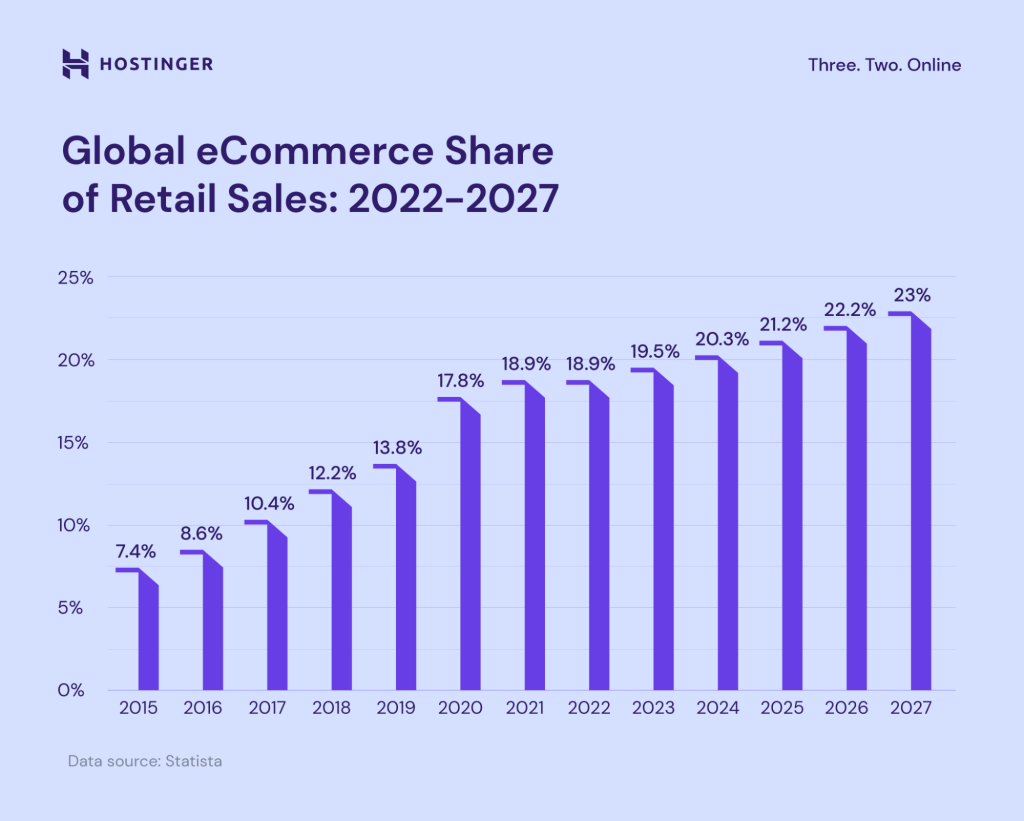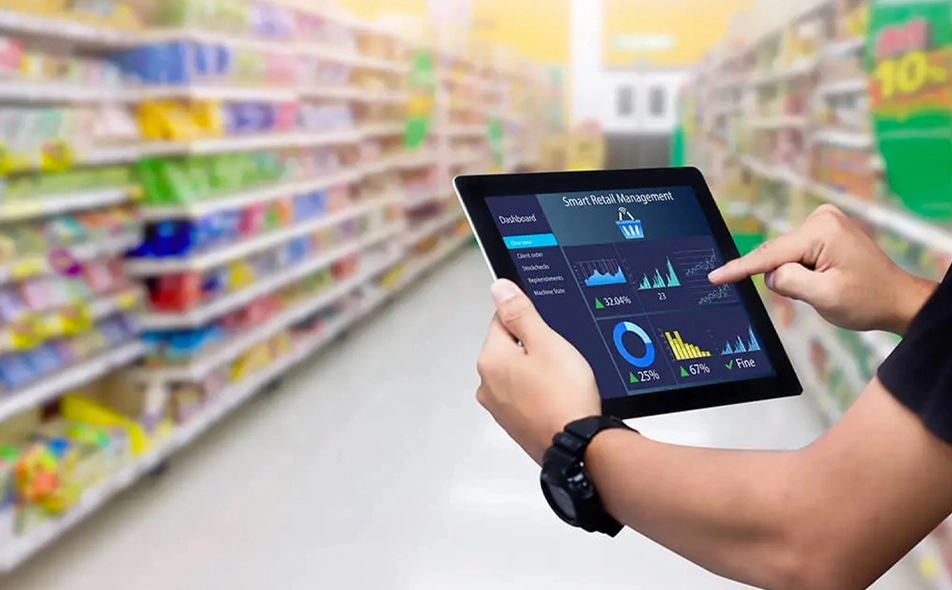
Unlocking the World’s Shopping Secrets: A Beginner’s Guide to Retail Sales Data & Global Consumer Behavior
Have you ever wondered why your favorite online store always seems to know what you want? Or why some products fly off the shelves while others collect dust? The answer lies in something powerful yet often invisible: Retail Sales Data.
In today’s fast-paced world, understanding what, where, and how people buy is no longer just a good idea – it’s essential. Retail sales data provides a treasure trove of information, offering unparalleled insights into global consumer behavior. For businesses, big or small, it’s like having a crystal ball to predict future trends and make smarter decisions. For consumers, it often translates into more personalized experiences and products that genuinely meet their needs.
This comprehensive guide will demystify retail sales data, explain why it’s so crucial, and reveal how it paints a vivid picture of how we shop across the globe.
>
What Exactly is Retail Sales Data? (The Basics for Beginners)
Imagine every time someone buys something – whether it’s a cup of coffee, a new smartphone, or a pair of shoes – a tiny piece of information is created. Retail sales data is simply the collection and analysis of these pieces of information about consumer purchases.
It’s not just about the total amount of money spent. This data typically includes details like:
- What was bought? (Product name, category, brand)
- How much was bought? (Quantity)
- Where was it bought? (Store location, website, country)
- When was it bought? (Date, time of day)
- How was it paid for? (Cash, credit card, mobile payment)
- Who bought it? (Demographics, if available from loyalty programs, or anonymous customer IDs)
- Any promotions or discounts applied?
Think of it as the ultimate shopping diary, recording every purchase journey, from impulse buys to carefully planned investments.
>
Why is Retail Sales Data So Important? (More Than Just Numbers!)
Retail sales data is far more than just a record of transactions. It’s the lifeblood of retail and a powerful indicator of economic health and consumer sentiment. Here’s why it’s incredibly important:
- 1. Understanding Your Customers: This is the big one! Data reveals who your customers are, what they like, what they need, and even what they might want in the future.
- 2. Spotting Trends and Patterns: Are more people buying sustainable products? Is online shopping growing faster in certain regions? Data helps identify these shifts.
- 3. Improving Products and Services: By seeing what sells well (and what doesn’t), businesses can refine existing products or develop new ones that truly resonate with their audience.
- 4. Better Marketing and Promotions: Instead of guessing, data helps target the right customers with the right message at the right time, making marketing efforts more effective and less wasteful.
- 5. Efficient Inventory Management: Knowing what’s popular helps retailers stock shelves intelligently, avoiding overstocking (which costs money) and understocking (which means lost sales).
- 6. Forecasting Future Sales: Historical sales data is crucial for predicting how much a business might sell in the coming weeks, months, or even years. This helps with budgeting and planning.
- 7. Making Smart Business Decisions: From opening new stores to expanding into new markets, every major business decision can be backed by concrete data, reducing risk.
- 8. Economic Health Indicator: Governments and economists closely watch retail sales data because it reflects consumer confidence and overall economic activity. When people spend more, it’s often a sign of a healthy economy.
>
Where Does All This Data Come From? (The Sources)
Retail sales data is collected from various points along the shopping journey:
- Point-of-Sale (POS) Systems: Every time an item is scanned at a cash register (in-store or online checkout), that information is captured by a POS system. This is the most direct source.
- E-commerce Platforms: Online stores automatically record every click, view, add-to-cart, and purchase. This data is incredibly rich, including browsing behavior.
- Loyalty Programs and Customer Accounts: When you use a loyalty card or log into an online account, your purchase history is linked to your profile, providing deeper insights into individual preferences.
- Credit and Debit Card Transactions: Payment processors collect anonymized data on transaction volumes and categories, providing broad market trends.
- Market Research Firms: These companies specialize in collecting and analyzing data from surveys, focus groups, and public records to provide broader market insights.
- Government Agencies: Many governments collect and publish retail sales data to track economic performance.
- Supply Chain Data: Information about what products are being shipped to stores can also indicate sales trends.
>
Decoding Global Consumer Behavior: What the Data Tells Us
Now for the exciting part! Retail sales data, when looked at on a global scale, paints a fascinating picture of how people shop, what they value, and how their habits are changing.
1. The Undeniable Rise of E-commerce
- Global Phenomenon: Online shopping isn’t just for tech-savvy countries anymore. Data clearly shows a sustained, rapid growth of e-commerce across almost all regions.
- Convenience Reigns Supreme: Consumers globally value the ability to shop anytime, anywhere, avoiding crowds and having items delivered to their doorstep.
- Mobile-First Shopping: A significant portion of online sales now happens on smartphones. This means businesses need mobile-friendly websites and apps.
- Cross-Border Shopping: E-commerce breaks down geographical barriers. Consumers are increasingly comfortable buying products from international sellers, driven by unique offerings or better prices.
- "Click & Collect" and BOPIS: The data shows a rise in "Buy Online, Pick Up In Store" (BOPIS) options, blending the convenience of online shopping with the immediacy of in-store pickup.
2. The Power of Personalization
- "Treat Me Like an Individual": Consumers are no longer satisfied with generic marketing. Sales data highlights a strong preference for personalized recommendations and offers.
- Data-Driven Suggestions: Online retailers use your past purchases and browsing history to suggest products you might like, often leading to higher sales.
- Tailored Experiences: From personalized email campaigns to customized website layouts, data allows businesses to create unique shopping journeys for each customer.
- Loyalty Pays Off: Loyalty programs, fueled by data, offer exclusive discounts and rewards that keep customers coming back.
3. Sustainability and Ethical Shopping are No Longer Niche
- Growing Eco-Consciousness: Retail sales data increasingly reflects a shift towards products that are environmentally friendly, ethically sourced, or come from sustainable brands.
- Gen Z and Millennials Lead the Way: Younger generations, in particular, are driving demand for transparency, organic ingredients, recycled materials, and fair trade practices.
- "Green" Premium: Consumers are often willing to pay a bit more for products that align with their values, as long as the claims are genuine.
- Brand Reputation Matters: Companies with strong sustainability practices often see higher sales and brand loyalty.
4. The Blurring Lines: Omnichannel Experience
- Seamless Shopping: Consumers expect a consistent experience whether they’re shopping online, on their phone, or in a physical store.
- Data Connects the Dots: Retail sales data from all channels is integrated to provide a holistic view of the customer, ensuring their online preferences are reflected offline, and vice-versa.
- Showrooming and Webrooming: Data shows customers often research products online (webrooming) before buying in-store, or browse in-store (showrooming) before buying online for convenience or better prices. Businesses need to cater to both.
- Unified Inventory: Knowing what’s available across all channels prevents frustration and lost sales.
5. The Impact of Economic Shifts and Global Events
- Inflation and Discretionary Spending: When inflation rises, data shows consumers often cut back on "non-essential" items, focusing on necessities.
- Recessionary Behaviors: During economic downturns, value-for-money products and discount retailers often see a boost in sales.
- Global Crises (e.g., Pandemics): Events like the COVID-19 pandemic dramatically shifted spending patterns, boosting home goods, entertainment, and essential items, while hitting travel and hospitality hard. Data tracked these changes in real-time.
- Disposable Income Fluctuations: Changes in income levels directly influence what and how much consumers buy.
6. Health and Wellness Focus
- Mind, Body, and Soul: There’s a growing global interest in health and wellness, reflected in sales of organic foods, fitness equipment, dietary supplements, and mental wellness products.
- Personalized Wellness: Data also shows a trend towards personalized health solutions, from customized meal plans to wearable tech that tracks individual metrics.
>
How Businesses Use Retail Sales Data to Their Advantage
Understanding consumer behavior is one thing; putting that understanding into action is another. Here’s how businesses leverage retail sales data:
- Product Development: If data shows a surge in demand for plant-based foods, a grocery store might expand its vegan offerings.
- Pricing Strategies: Analyzing competitor pricing and customer willingness to pay helps set optimal prices that attract buyers without leaving money on the table.
- Marketing Campaigns: Identifying who buys what, when, and where allows for highly targeted advertisements that are more likely to convert.
- Supply Chain Optimization: Predicting demand accurately minimizes waste, reduces storage costs, and ensures products are available when customers want them.
- Store Layout and Website Design: Data on customer flow in stores or click-through rates on websites helps optimize layouts for better sales.
- Customer Service: Understanding common issues or preferences from sales data can lead to more proactive and effective customer support.
- Expansion into New Markets: Before opening a new store in a different country, businesses analyze local retail sales data to gauge market potential and consumer preferences.
>
Challenges in Analyzing Global Retail Data
While powerful, working with global retail sales data isn’t without its hurdles:
- Volume and Variety (Big Data): There’s an enormous amount of data from countless sources, making it complex to collect, store, and process.
- Data Quality: Inaccurate or incomplete data can lead to flawed insights and poor decisions.
- Privacy Concerns: Collecting personal data raises ethical and legal questions. Businesses must comply with regulations like GDPR (Europe) and CCPA (California).
- Cultural and Regional Differences: What sells well in one country might not in another due to cultural norms, economic conditions, or local tastes. Data needs to be interpreted with this in mind.
- Technological Gaps: Not all businesses, especially smaller ones, have the tools or expertise to analyze complex data effectively.
- Real-time vs. Lagging Data: Some data is instantly available, while other reports might have a delay, meaning insights could be slightly outdated.
>
The Future of Retail Sales Data: What’s Next?
The world of retail data is constantly evolving. Here’s a glimpse into the future:
- Artificial Intelligence (AI) and Machine Learning (ML): These technologies will become even more crucial for processing vast amounts of data, identifying subtle patterns, and making highly accurate predictions.
- Predictive Analytics: Moving beyond just understanding the past, AI will allow businesses to predict future trends and individual customer behavior with remarkable accuracy.
- Hyper-Personalization: Imagine walking into a store, and your phone instantly alerts you to sales on items you’ve previously shown interest in online, or even guides you to them.
- Augmented Reality (AR) and Virtual Reality (VR) Shopping: Data from AR/VR interactions will provide new dimensions of insight into how consumers engage with products in virtual environments.
- Voice Commerce Data: As more people shop using voice assistants, data from these interactions will become a new source of consumer insights.
- Blockchain for Transparency: This technology could offer more transparent and secure ways to track product origins and supply chains, appealing to ethically-minded consumers.
>
Conclusion: The Data-Driven Revolution in Retail
Retail sales data is no longer just for the number crunchers; it’s a fundamental tool that empowers businesses to thrive in a competitive global marketplace. By meticulously collecting, analyzing, and interpreting this information, companies can:
- Understand their customers like never before.
- Adapt quickly to changing global trends.
- Offer highly personalized and satisfying shopping experiences.
- Make informed decisions that drive growth and success.
For beginners, understanding the basics of retail sales data opens up a fascinating window into the world of commerce and consumer psychology. It reveals that every purchase we make, every item we browse, contributes to a larger story – a story that shapes the products we see, the prices we pay, and the way we experience shopping, both now and in the future.
Embrace the power of data; it’s the key to unlocking the secrets of global consumer behavior and building a more responsive, efficient, and customer-centric retail world.
>
Frequently Asked Questions (FAQs)
Q1: What is the difference between retail sales data and market research?
A1: Retail sales data focuses on actual past purchase transactions. Market research is broader and can include surveys, focus groups, and competitor analysis to understand consumer opinions, needs, and market potential before purchases are made. Sales data tells you what happened; market research often explains why it happened or what might happen.
Q2: Can small businesses really use retail sales data effectively?
A2: Absolutely! While they may not have the resources of large corporations, small businesses can use their own POS data, e-commerce platform analytics (like Shopify or Etsy stats), and even simple spreadsheets to track what’s selling, popular times, and customer preferences. There are also many affordable analytics tools available.
Q3: How often is retail sales data updated?
A3: This varies greatly. For individual businesses, POS and e-commerce data can be real-time or updated daily. Government reports on national retail sales are typically released monthly or quarterly. Market research firms might provide reports on varying schedules, from weekly to annually, depending on the scope.
Q4: Is retail sales data always accurate?
A4: While technology aims for high accuracy, data can sometimes be inaccurate due to human error (e.g., wrong item scanned), system glitches, or incomplete information. Businesses invest heavily in data quality checks to minimize these errors.
Q5: What are "consumer insights" in the context of retail sales data?
A5: Consumer insights are the deeper understandings or "aha!" moments derived from analyzing retail sales data. It’s not just what people bought, but why they bought it, what motivated them, and what unmet needs they might have. These insights help businesses connect with customers on a more meaningful level.


Post Comment